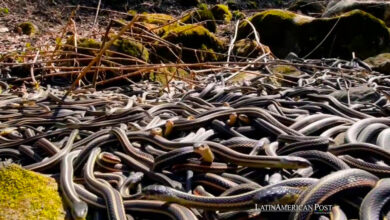Forests of Remembrance: this is how those who died from COVID-19 in Brazil are commemorated
This initiative supported by the United Nations Environment Program (UNEP) seeks to plant 200,000 trees in commemoration of the 200,000 victims of COVID-19 .

To date, the Latin American country has more than 211,000 deaths from the virus. / Photo: Fundação Brasil Cidadão
LatinAmerican Post | Vanesa López Romero
Listen to this article
Leer en español: Bosques del Recuerdo: así se conmemoran a los fallecidos por el COVID-19 en Brasil
Brazil is one of the countries that has been most affected by the COVID-19 pandemic. As of today, the Latin American country has more than 211,000 deaths from the virus, ranking second globally (below the United States) and first in the region with the most deaths from the coronavirus. This alarming figure is accompanied by a gray spot for this country: deforestation.
According to reports from the World Wildlife Fund (WWF), in the last 13 years there has been a 94% decrease in wildlife in Latin America, especially in the Brazilian Amazon. Likewise, WWF estimates that the fires in the Amazon during 2019 produced 80% of the emissions in Brazil.
Also read: Climate change could be favorable for Russia
In the wake of this situation, several individuals and organizations have come together to commemorate the memory of the lives that have been lost throughout the pandemic while fighting climate change that seems to be more and more imminent. On December 12, several grieving families, supported by the Mata Atlântica Biosphere Reserve and the Pact for the Restoration of the Atlantic Forest, launched this tree-planting campaign that seeks to conserve and restore tropical forests in 17 states of Brazil.
Recently, UNEP decided to join this initiative and, in addition to helping Forests of Remembrance to become a campaign that is more recognized throughout the world, it will ensure that native tree seedlings are properly nurtured to maturity.
200.000 árboles
para
200.000 víctimas de la #COVID19 en Brasil .Es el objetivo de una campaña de restauración que busca honrar la memoria de los fallecidos, agradecer al personal de salud y combatir la deforestación.
Conócela: https://t.co/0WYcpFJisi pic.twitter.com/P5rFE2pmFY
— Programa ONU Medio Ambiente (@unep_espanol) January 18, 2021
For Tim Christophersen, director of UNEP's Nature and Climate subdivision, “ this is a great initiative because it shows multiple dimensions of restoration. In particular, that restoration seeks to heal our relationship with nature but that, at the same time, it is a healing experience for ourselves ”.
The main objective of the campaign is to plant 200,000 trees by June 5, 2021, the date on which World Environment Day is celebrated.
Among the species that are planned to be planted there is a diversity of native tree species of the Atlantic Forest region, among which are Inga sp., Guayaba (Psidium guajava), Jacaranda (Jacaranda caroba), Ipé (Tabebuia spp.) , Grumichama (Eugenia brasiliensis) and several species of the botanical families Myrtaceae, Malvaceae, Lauraceae and Fabaceae.
In addition, this commitment to repair regions devastated by deforestation will allow species that are in danger, such as the golden lion tamarin monkey, whose natural habitat was reduced to 2% by deforestation, to be directly benefited by Forests of Memory.





